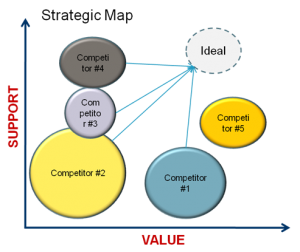 You are a busy person and taking time to read this is a significant investment for you.
You are a busy person and taking time to read this is a significant investment for you.
You know what it is like to create and run a business successfully in a market environment that is highly competitive and requires that everyone on your teams understands and contributes to the mission that you have defined. Executing the current business is difficult enough without the ever present and pressing complications of competition. Yet, competition is real and what others do makes a difference to your success or failure. Competitive intelligence can help you navigate through the complexities of the competitive environment better.
Alignment leading to tangible results in market share, revenue and profits is what you are after. Your goal is strategies that mobilize the organization and point the right way forward. There are five common imperatives that you have and several ways that competitive intelligence can help you.
- Protect the current business. Operational issues are important because today’s business funds tomorrow’s investments. Current products must be sold. Current customers must be serviced. How are you doing compared to your major competitors? Would benchmarking show more that you have more advantages or disadvantages?

Compare selling and business development strategies with competitors, benchmark your operations and analyze customer decision-making criteria. - Mobilize the organization. No important competitor is passive. Dedicated people at those companies are working to shape the future in their favor rather than yours. Their strategies are being implemented and you need to know what they are and what they mean to your strategies. One person cannot possibly do this alone. However, a well trained and focused team can do it and win. What would it mean to you to have your organization highly tuned to the competitive environment?
Provide periodic competitive news and alerts, implement information sharing tools and train teams to identify important competitive intelligence issues. -
Read the rest of this entry